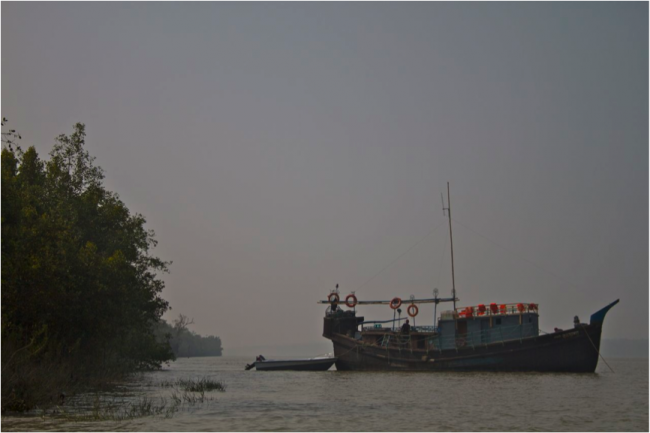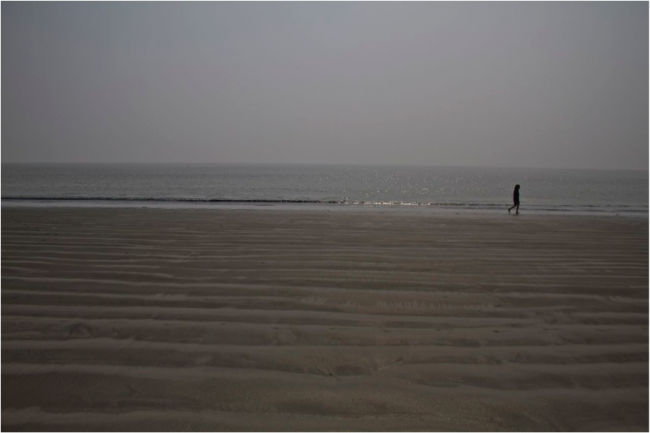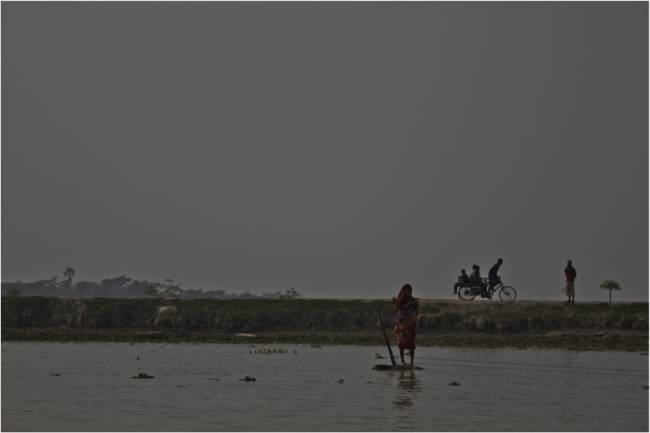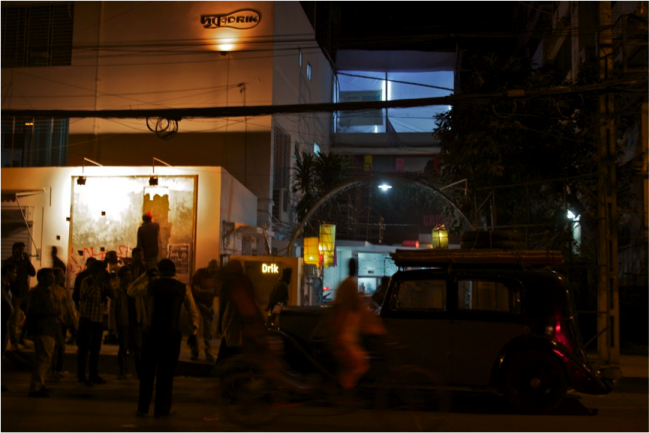Letter from Bangladesh
Mr Bhuyani the Customs man was delighted but perplexed. What to do with a 75 year old British car with no papers but whose owners assure him confidently that the Minister of Commerce has personally given permission to bring it into the country?
The Customs post at Tamabil consists of 2 small houses next to the border with India. With no fax, no internet, no copier and no mobiles, it is to Dhaka what Hadrian’s Wall was to ancient Rome: a forgotten outpost at the end of the known world.
Mr Bhuyani’s answer was chai and oranges and a lot of talking. Kamran appeared. Former MP, successful businessman and an old friend, he smoothed the passage: we would, it was (reluctantly) agreed, wrap the car up in our (very large) tent; Mr Dhuyani’s men would guard it with their lives; and we would return later with the right piece of paper.
Quite a lot later, as it turned out. Three weeks. Getting it required the patience of Job, friends in high places and an article in the London Times headlined No Entry for Rolls that went everywhere. After numerous meetings with agreeable but powerless bureaucrats we were summoned to an audience with the Supreme Being, namely the Chairman of the National Board of Revenue. He asked to see a picture of the car. I produced a 10×8 black & white print of the Rolls standing in front of a fine C18th mansion in Lincolnshire. Standing beside it was the Peer of the Realm who owned the mansion and a man with a shock of white hair who looked exactly like Boris Johnson.
The Chairman was impressed. He lifted the phone and spoke to the Chief Controller. “These people”, he informed him, “are plainly honourable. What’s the problem?” The Chief Controller held forth about the importance of regulations. The president interrupted: “Don’t give me the legals. I want a solution.” He put the phone down and asked for my card. On the back of it he wrote his instructions – “To the Chief Controller. Kindly do the needful ” – and signed it.
I arranged for this cryptic note to be delivered to its addressee. The needful would, we were told, take a week. So we drove south to the Bay of Bengal and hired a large wooden fishing boat to take us through the great mangrove forests of the Sundarbans down to the open sea.
We fell in love with FB Aysa at first sight. She was all curves. Built with massive timbers the gunwales sweep down from a long blue bowsprit on which it was proclaimed, in giant red Arabic letters, that Allah was God. High on the stern, hanging out over the waters, was a finely carved wooden tower. From here you shit straight into the river. Amidships, nailed to the deck, was a makeshift structure containing two cabins and an incongruous flush lavatory, all of which are dismantled at the end of the season when FB Aysa and her crew go back to fishing. The kitchen was in the foc’sle and from it, up a steep ladder, emerged fresh char-grilled fish garnished with sweet limes. I learned to cook roti in that foc’sle, with the anchor rope piled up behind slats right by the frying pan.

FB Aysa in the Sundarbans
We stopped to walk on rippled sandbars on the way to the ocean. They were empty save for millions of baby red crabs burying themselves in the sand in advance of the incoming tide. Without these tiny creatures, we discovered, the mangroves would die within 3 days. The crabs’ job in life is to clear up fallen leaves. But for them the acidity from rotting leaves would accumulate and poison the mangroves.

Jan walks along rippled sands by the Bay of Bengal
From time to time Rimon, who started as our guide and is now a firm friend, took us up narrow creeks in a small green skiff propelled by a man with an oar at the stern. We travelled in silence and saw troops of Rhesus Macaques, racket-tailed drongos, Brahmin kites, bronze eagles and 2 very large crocodiles asleep on a mud-bank. One night we went far into the Ocean and anchored at The Swatch of No Ground. We woke before dawn, hauled the anchor, drank coffee to keep warm and watched bottle-nosed dolphins playing in our bow waves and whales blowing on the horizon. For 5 days Rimon, who has lived and worked in the Sunderbans for 20 years after completing his masters in Germany, shared with us his knowledge of the Sundarbans and its wildlife and his understanding of the threats to the area’s future.

A flood barrier in the Sundarbans
In due course we returned to the north of the country to collect the Rolls. Mr Bhuyani greeted us warmly. We produced the needful. He produced more chai and oranges and scrutinized the document at length in complete silence, as a scholar might an ancient manuscript. Eventually he looked up. “I am so sorry”, he announced in authoritative tone, “for your great suffering”.
Scribes were summonsed and long letters slowly dictated. Expectant guards stood round the Rolls, still wrapped in its olive green shroud. In due course all was in order. The letters were signed and sealed with wax, photographs were taken, the Rolls scrubbed, the guards tipped (handsomely, for dacoits and other undesirables, we were assured, had been seen off, lives had been risked), much shaking of hands and bestowing of Islamic blessings.
And so we were back on the road, Bangla flag flying from the radio aerial, heading for Dhaka where, after a couple of recuperative nights with the redoubtable Kamran (whose wife, being a cabinet minister, had been a helpful guide on the bureaucratic path) we were to be guests of Chobi Mela. Literally Festival of Light, Chobi Mela is widely regarded as the most influential festival of photography in the developing world. We reached Dhaka late at night after 10 hours on the road and 3 hours welding the exhaust after it was torn out by a metal spike on a dodgy bridge.
We went straight to Drik. Drik is the nerve-centre of photography in Bangladesh, its courtyard a gathering place, its coffee-house a talking shop and its walls the place aspiring photographers hope to hang their prints. It is also the leading news agency in the country. Drik – Sanskrit, meaning “inner vision” – was founded by Shahidul Alam in the early 90’s, as was Chobi Mela a decade later.

We arrived to a warm welcome at Drik in Dhaka at 10 o’clock at night
He and many other old friends from different countries were there to greet us in the warm Bangladeshi night, and it was a bear hug of a welcome. This was a high point in our journey across the sub-continent. It was 20 years since Jan and the children were last in Dhaka; it was there that we had met Shahidul, then an unknown photographer, for the first time. I had been back many times since then, to teach and to learn, to see other photographers’ work and exhibit my own. So in a sense I was re-introducing them into a world which started as ours and had become mine.
We stayed for 10 days. There was an air of excitement as the opening day drew near. Photographers arriving from far-flung places wanting to know about their prints, lecturers like me needing to know the programme, film-makers hoping to use the recording studio, journalists, sensing the eclectic magic of Chobi Mela, looking for the touchstone to light a story. It looked like chaos – it always does – but it is a chaos you want to be a part of.
The extraordinary thing is that out of it emerges, if not quite order, a powerful force for change. It is this that marks Chobi Mela out from other festivals. As a Bangladeshi business man remarked to me over dinner in London a few years ago, “in a country where nothing is possible everything is possible”. In spite of epic traffic jams, regular hartals (literally “lock-outs”), routine power-cuts and mind-bending bureaucratic hurdles Shahidul and his team of dedicated professionals produce exhibitions of powerful images on time in a dozen different locations.
The festival celebrates more than just images. It recognizes the power of photography to raise awareness and re-arrange perceptions. Many of the images exhibited in Chobi Mela are uncomfortable. They portray the legacy of violence, convey a clear message of political protest and are tools in the long fight against injustice. Above all they represent a young nation’s attempt to understand the enormity of the challenges it contends with, and they celebrate the integrity and passion which lies at the heart of this festival and the Bangladeshi movement of which it is a part.
I have been here, teaching the law of copyright and exhibiting work, for a decade now; each time I am moved afresh by stories of young photographers engaging with their world, searching for meaning in their own and other’s lives, recording the fragility, the perversity and the magic of the human condition. And alongside them, as companions and mentors in their search, photographers prominent in their field are showing their work, sharing their perspectives and passions and teaching what they have learned while reporting from the front line on the major issues of our times.
Shahidul Alam shared this vision with me many years ago. The story of how, in this most unlikely of nation-states, it has gradually turned to reality is astonishing, and it is by no means finished. These students of photography are set to produce images which will shape opinion and contribute to change, just as the western photographers from Magnum and the other great agencies did in earlier generations. As the New York Times reported the day we arrived, Chobi Mela bears witness to the remarkable transformation that is taking place within photography in Bangladesh.
During our time in Dhaka political tension was rising. It always does in election year. The possibility of violence on the streets is real. A hartal was declared for 6.00 am on the day we were scheduled to leave Bangladesh. The night before we had a bad moment in a crowded market-place in Jessore. It wasn’t the usual combination of friendly smiles in passing and questions about petrol consumption; raised voices and gesticulating arms spoke of a different agenda, and Jan, Katherine & I had an uneasy sense we were in the wrong place at the wrong time. With external smiles and a waving of hands to clear the way we broke free of the crowd just as its mood was changing, and parked up in a military compound until friends arrived so we could go in convoy to where we were staying the night.
We left for the border the following morning in the darkness before dawn. It was the last day of January. We motored over empty roads, past rice-paddies shrouded in mist and shadowy figures, barely visible in the darkness, crouched over roadside fires. We reached the border without trouble at 5.45 am, just before the hartal began. After two hours negotiating with Customs we drove into India below a magnificent avenue of mighty acacia trees. They were planted by the British in the late C19th to shield their soldiers from the tropical sun. These arborial giants dominate the landscape, and their mighty trunks, decorated incongruously with slabs of drying cow-dung, cast cool shadows across a hot land.
Rupert Grey
March 2013
